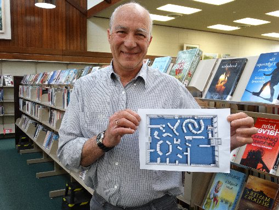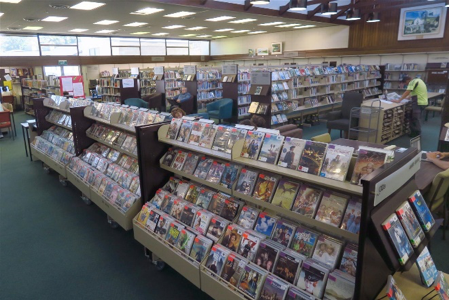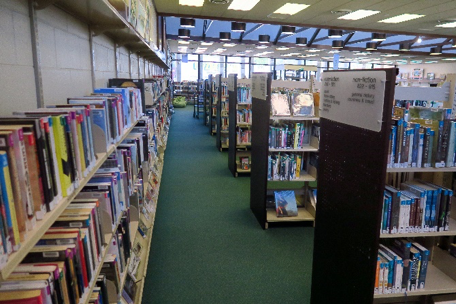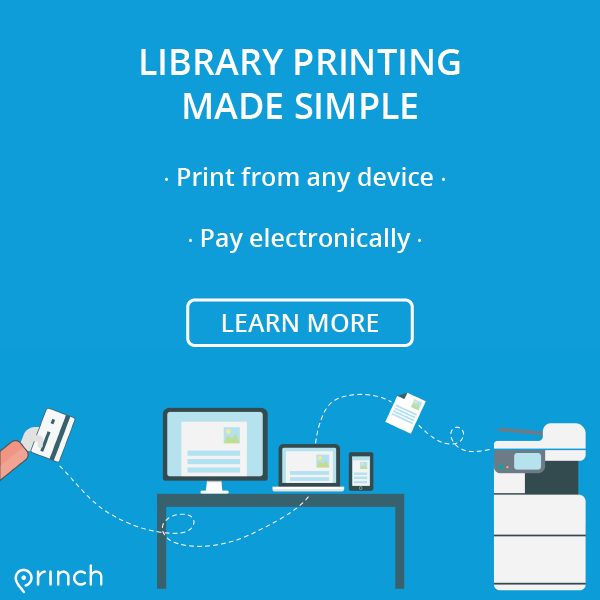“On the smell of an oily rag and a can-do philosophy” This is how Philip van Zijl explained the process of reconfiguring, automating and generally optimizing Ōamaru Public Library. In today’s post Philip, who has experience with reconfiguring libraries, will discuss in depth the process of changing the Ōamaru Public Library to what it is today.
Background
Ōamaru, Waitaki district, is a small coastal town on the South Island of New Zealand, with a population of about 14,000, and a district population of about 21,000. There are five branch libraries, mostly run by volunteers and supported by the main library in Ōamaru. We serve the needs of a growing population of senior citizens, young parents, youth, tourists and a wide diversity of multi-cultural groups. This includes the highest population of Pasifika—indigenous peoples of the Pacific Islands—per capita in NZ.
Libraries must respond to the evolving expectations of customers. It became obvious that the layout, staffing structure and facilities of the 40 year old Ōamaru Library were no longer fit for purpose.
#Libraries must respond to the #evolving expectations of #customers Share on XThe Shift
The major shift in focus came as a response to the changing roles that Libraries have to play in supporting their communities. Many patrons are disadvantaged when needing to access government services on-line because of a lack of digital devices and/or competencies. The library needed to:
- Provide access to Wi-Fi and the internet
- Provide access to suitable hardware
- Educate customers to use technology (both their own devices and library resources)
- Educate customers to access online information (particularly Government websites and applications)
- Engagement with customers
A Library business case was unanimously approved by Council. This was dependent on an agreement, to have zero impact on the Library’s budget. This business case addressed evolving needs of the public and proposed a refit of the Library and introduction of RFID technology. This was achieved by taking out a loan from Council and repaying it out of recurrent budget savings, over 10 years. The budget approved was US$102,000 and we still have US$12,000 for RFID at the branches. All the furniture, fittings, upholstery, signage, renovations, consultation fees, and RFID equipment, were included in this budget.
The major shift in focus came as a response to the #changing roles that #Libraries have to play in #supporting their #communities. Share on XThe Libraries Manager attended an Alan Bundy Library Design conference in Sydney, where Rachel van Riel presented a paper and hosted a post-conference workshop. Her retail and customer centred design philosophy fitted with the needs of Ōamaru and underpinned the planning process of the changes.
The Library and Information Association of New Zealand Aotearoa invited Rachel to run a workshop in Dunedin which most of the staff attended. Library staff also attended a change management workshop to equip them with a better understanding of the theory behind the shift in customer service and acceptance of the proposed solution. Input from staff throughout the planning process was encouraged.
Conventional lay-outs
Refurbishment/RFID
The 18 months planning process included staffing restructuring, working with the union. All position descriptions were adjusted to align with the proposed changes in service. All vacancies were initially filled with temporary appointments to mitigate redundancies. These were inevitable as at least 40% of staff time was spend on conventional circulation desk duties.
Although restricted by the small existing building footprint, it was decided to:
- Develop multi-use, flexible spaces to cater for different types of library activities and uses – e.g. helping people with technology, hosting community events
- Put ‘like with like’, to avoid possible conflict between uses and users (e.g. keep quiet activities together in one area)
- Incorporate a retail-based layout to:
- Make it easier for people to find what they’re looking for (including books)
- Create more social spaces and address ‘the Library as a social hub’ concept.
Some shelves were fitted with wheels to allow flexibility for events. Permanent projection facilities were installed in the Children’s area, to further support community events and educational activities. The manager’s office was converted into a small community space featuring a smart television, laptops and tablets, with available staff to support. Now it is being used for staff training and demonstrations and teaching the public, for community organisations to hold meetings, and for people to study or read quietly. Other major changes included new carpeting, decorating, improved signage, resulting in a brighter and lighter atmosphere. Where possible, furniture was refurbished or sourced second hand.
Layouts
The community space that has exceeded expectations with constant uptake from businesses and community groups. With the creation of separate areas, different user groups can be catered for. Children are accommodated in one corner and in the opposite corner we have a youth area. Tourist visitors face the front windows, where there is an ample provision of USB ports, charging stations and comfortable furniture, away from quiet reading areas.
A different layout for the non-fiction section created lounges like “living rooms” which have comfortable, colourful furniture that are organised into areas of interest. The layout features more books facing out, similar to displays found at book retailers. These spaces also allow for more private or small group options.
The layout changes were achieved during a period of closure of three weeks with Library staff, volunteers, Information Technology staff, Property staff, Design Federation staff as well as contractors all working together to meet the deadline.
Reconfigured lay-outs
Implementation
We allowed for at least 12 months of consolidation after the introduction of RFID and the refurbishment before further initiatives were introduced. The positive feedback from a Library survey and the constant positive comments from the public, and an external Review of the Library, further reinforced that we were on the right track. The reciprocal benefits of the philosophy of customer engagement instead of a transactional relationship, has been embraced by staff, leaving them energized and motivated. The fact that there were no staff losses due to the introduction of automation, was a major contributing factor.
#Libraries need to be focused on building strong communities and reconfiguring around the user experience @lorcanD #national16
— ALIA Sydney (@ALIASyd) August 30, 2016
Staff have more time for community outreach and to work with the Branch libraries, schools and other organisations. Branch equity is now being addressed. This includes building and RFID expansion, collection development and volunteer training. Other initiatives being developed include seniors’ outreach, community outreach, re-establishing of the Friends of the Library and staff training in digital literacy as a precursor to public digital literacy support.
Improved Customer Service has been our major goal and the library has indeed become the public face of the Council. We might have an outdated building footprint, without all of the ‘frills,’ but we are proud of all that was achieved on the smell of an oily rag and a ‘can do’ philosophy. My contention has always been that Libraries are not just about the bricks and mortar, but about the staff. To quote a Māori proverb “He tangata, he tangata, he tangata!” It’s all about the people!

Photo: Daniel Birchfield
Libraries Manager
Recent posts
Green Libraries: How Sustainable Design is Shaping the Future of Public Libraries
In this week's Princh Library Blog post, recurring guest writer Sam L. Bowman discusses an ever so important topic: sustainable design and [...]
Librarians Supporting Digital Literacy in the Community
In this week's Princh Library Blog, Nina Grant covers why digital literacy is important, the variety of ways in which librarians are supporting [...]














Leave A Comment